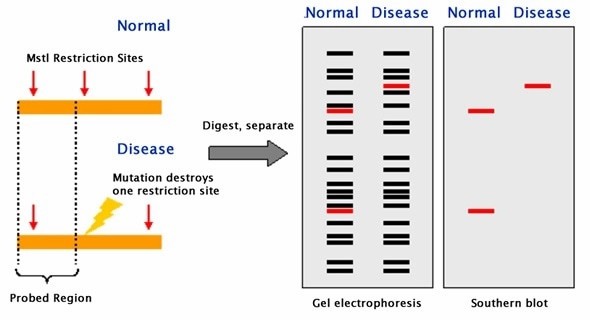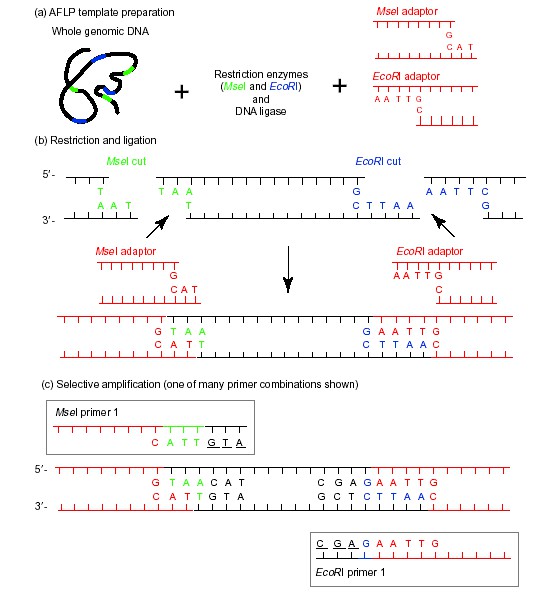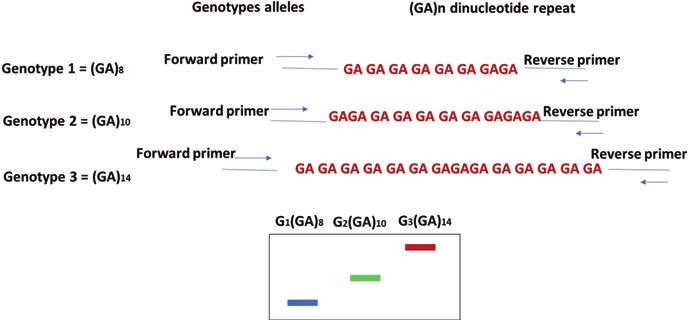views
Molecular markers serve as fundamental tools in the field of molecular breeding. They are instrumental in identifying and tracking genetic variants within the genome. Analogous to how landmark buildings are used for orientation in daily life, molecular markers are essential for pinpointing specific genes or loci on chromosomes within the genome. These markers utilize molecular components, such as nucleotides, to provide a means of genetic identification.
The core characteristic of molecular markers is their polymorphism. This refers to the presence of multiple states or variations of a specific gene or locus among different genetic materials, which is crucial for distinguishing and comparing various genetic entities.
Historically, the development of genetic markers has evolved from morphological markers—based on physical traits of organisms—to cytological markers—based on chromosome number and morphology—and then to biochemical markers—such as serum proteins and isoenzymes. However, these traditional methods offer indirect genetic information and are susceptible to environmental influences, limiting their effectiveness.
In contrast, molecular markers operate at the DNA level, detecting genetic variation with high stability, rich information content, and strong reliability. This technology eliminates environmental interference, providing a more precise and reliable basis for genetic research. Currently, molecular marker technology has advanced to include dozens of types, with applications spanning crop genetic breeding, genomic mapping, gene localization and cloning, plant phylogenetics, and germplasm bank construction.
Characteristics of Ideal Molecular Markers
An ideal molecular marker should possess the following characteristics:
High Polymorphism: Ensures the ability to reveal substantial genetic variation.
Codominant Inheritance: Facilitates the clear distinction between homozygous and heterozygous states at specific loci.
High Frequency in the Genome: Ensures broad applicability.
Even Distribution Across the Genome: Minimizes the risk of omitting critical genetic information.
Neutral Selection: Avoids bias in genetic analysis.
Ease of Acquisition and Rapid Analysis: Enhances research efficiency.
Good Reproducibility: Guarantees the reliability of results.
Low Cost of Marker Separation: Reduces research expenses.
Development of Molecular Markers
Molecular marker technology has progressed through three generations, with prominent markers including Restriction Fragment Length Polymorphism (RFLP), Amplified Fragment Length Polymorphism (AFLP), Simple Sequence Repeats (SSR), Single Nucleotide Polymorphisms (SNP), and Insertion/Deletion Polymorphisms (InDel). These markers play a critical role in genetic research, providing powerful tools for elucidating biological inheritance patterns and facilitating genetic improvement.
First-Generation Molecular Markers
The concept underlying first-generation molecular markers is deeply rooted in the principles of molecular hybridization technology. Among these, Restriction Fragment Length Polymorphism (RFLP) represents a hallmark of molecular marker techniques, with its design closely associated with Southern blotting methodology.
Mechanism of RFLP Technology
The operation of RFLP technology is both profound and precise. Initially, specific restriction endonucleases are employed to meticulously recognize and cleave genomic DNA extracted from different biological individuals. During this process, variations such as base substitutions, rearrangements, and deletions among alleles of different individuals result in changes to the recognition sites of the restriction endonucleases, thereby causing significant differences in the lengths of restriction fragments between genotypes.
Subsequently, these differing fragments are effectively separated using electrophoresis and transferred onto a specific membrane. The DNA fragments on the membrane are then denatured to facilitate hybridization with pre-labeled probes. Under stringent hybridization conditions, followed by a washing step to remove non-specific bindings, the hybridization signals are detected. This allows for an in-depth analysis and revelation of the polymorphic characteristics between different genotypes.
 Restriction Fragment Length Polymorphism (RFLP) (Mohammad Saad Zaghloul Salem 2015)
Restriction Fragment Length Polymorphism (RFLP) (Mohammad Saad Zaghloul Salem 2015)
In the early stages of molecular genetics, RFLP technology was extensively utilized for gene mapping and for in-depth studies of chromosomal structure and function. The defining characteristic of RFLP markers is their co-dominance, which ensures that both alleles at a locus are distinguishable, combined with notable reproducibility and stability. However, several significant limitations are associated with this technology, including inadequate technological maturity, low levels of polymorphism, high DNA quality requirements, and complex operational procedures. These factors collectively constrain its application scope. As a leading low-cost DNA genotyping technology, RFLP has gradually fallen out of favor and is now largely considered outdated in the current technological context.
Second-Generation Molecular Markers
Second-generation molecular markers are based on Polymerase Chain Reaction (PCR) technology. Depending on the characteristics of the primers used (either random or specific) and their combination with restriction enzymes, these markers can be categorized into various types as follows:
Classification of Molecular Markers Based on PCR Methodology
| Category | Description |
|---|---|
| Markers Based on PCR | |
| Core Based on Random Primers | - Random Amplified Polymorphic DNA (RAPD) - Inter-simple Sequence Repeat (ISSR) - Random Amplified Microsatellite Polymorphisms (RAMPs) |
| Core Based on Specific Primers | - Simple Sequence Repeats (SSR) - Sequence-Related Amplified Polymorphism (SRAP) - Target Region Amplification Polymorphism (TRAP) |
| Markers Based on PCR and Restriction Enzyme Digestion | |
| Selective Amplification of Restriction Fragments | - Amplified Fragment Length Polymorphism (AFLP) - cDNA-AFLP |
| Restriction Enzyme Digestion of PCR Products | - Cleaved Amplified Polymorphic Sequences (CAPS) - Derived CAPS (dCAPS) |
Compared to first-generation technologies, second-generation molecular markers exhibit superior advancements with richer polymorphism and significantly reduced DNA sample requirements. However, this progress is accompanied by higher cost implications. In the initial stages of its application, this technology was extensively employed in various domains such as marker-assisted breeding, precise construction of genetic maps, comprehensive systematics, and genetic diversity assessment.
 Overview of the AFLP process (from Mueller and Wolfenbarger 1999).
Overview of the AFLP process (from Mueller and Wolfenbarger 1999).
SSR in Molecular Genetics
Microsatellite markers, also known as SSR, represent a critical advancement in molecular marker technology, often regarded as emblematic of the second generation of molecular markers. This classification, although somewhat subjective, fundamentally differentiates SSRs from other markers such as RAPD and AFLP, which are typically categorized as first-generation markers. This distinction underscores the technological evolution inherent in the development of these markers, hence the following discussion will focus exclusively on SSRs without reiterating the technical foundations common to these marker systems.
Historical Context and Prevalence
SSR markers have distinguished themselves in molecular genetics due to their unique characteristics, making them a focal point of research during specific periods. For instance, during my graduate studies, SSR markers were a predominant tool in laboratory experiments, and it is reasonable to infer that many research laboratories continue to employ this technology. Therefore, a more detailed examination of SSRs is warranted to elucidate their relevance and application in contemporary research.
Structure and Distribution
Microsatellites are composed of short, tandemly repeated nucleotide sequences, typically ranging from 1 to 6 base pairs in length, with the total length of the sequence generally not exceeding 100 base pairs. Common motifs include (TG)_n, (GA)_n, (AAT)_n, and (GACA)_n, with the (AT)_n motif being particularly prevalent in plant genomes. These motifs are not only widespread in eukaryotic genomes but are also present in certain prokaryotic genomes, being randomly distributed across nuclear DNA, chloroplast DNA, and mitochondrial DNA.
Mechanism of SSR Marker Analysis
The operational principle of SSR markers hinges on the presence of highly conserved single-copy sequences flanking the microsatellite DNA regions. Researchers can design specific primers targeting these conserved sequences, enabling the amplification of the SSR regions via PCR. The amplified products are then subjected to gel electrophoresis to determine their lengths, which correspond to the number of repeat units within the microsatellite DNA. The high polymorphism observed in SSR markers arises primarily from variations in the number of tandem repeats within the core sequence.
SSR markers' capability to reveal allelic diversity through simple, reliable, and reproducible methods has cemented their role as indispensable tools in genetic mapping, population genetics, and evolutionary biology studies. Their widespread application and continued relevance underscore their utility in molecular genetics, making them a cornerstone of genetic analysis in various organisms.
 The SSRs or microsatellite principle based on a (GA)n motif in three different genotypes. Prepared by K.F.M. Salem
The SSRs or microsatellite principle based on a (GA)n motif in three different genotypes. Prepared by K.F.M. Salem
Other Marker Classifications
In addition to DNA-based markers, other types of molecular markers exist, including those based on proteins and small metabolite molecules. These molecular markers can be classified according to various criteria, such as the type of molecule or omics technology employed, as well as their location and function.
For instance, messenger RNA (mRNA) can be classified based on expressed sequence tags (ESTs). From a locational perspective, molecular markers can be categorized as physical markers, while from a functional standpoint, they may be referred to as functional markers. Notably, non-nuclear markers, such as mitochondrial DNA (mtDNA), also exist. However, as these are not the primary focus of this discussion, they will not be elaborated upon further.
Reference
- Amira M.I. Mourad et al., (2019) Recent Advances in Wheat (Triticum spp.) Breeding. DOI: 10.1007/978-3-030-23108-8_15.






















Comments
0 comment